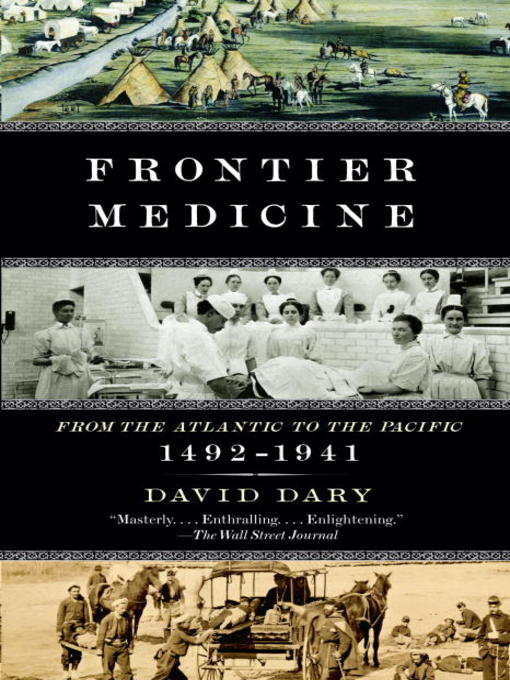
Frontier Medicine
From the Atlantic to the Pacific, 1492-1941
از اقیانوس اطلس تا اقیانوس آرام، ۱۹۴۱ - ۱۴۹۲
کتاب های مرتبط
- اطلاعات
- نقد و بررسی
- دیدگاه کاربران
نقد و بررسی

September 22, 2008
Scurvy, contaminated water and challenging environments were among the medical problems faced by frontier settlers, who resorted to the rough-and-ready treatments of herbal and traditional medicines, quack concoctions and whatever worked. This is the story prolific western writer Dary (The Oregon Trail
) provides in a deeply researched, anecdotal history. Fourteen chapters range from “Indian Medicine” and “In Western Towns” to “Quacks” and “Midwives and Women Doctors.” A skilled storyteller, Dary fills each chapter with tales of doctors (not always well trained) and patients, colorful events, important discoveries and a seemingly endless pharmacopeia of herbal recipes and drugs, beliefs and often gruesome medical procedures. Dary agrees with today's experts that doctors in that era who practiced “heroic medicine”—bleeding, purging, administering emetics and toxic metals such as mercury and arsenic—did more harm than good. Fortunately, even quacks were too expensive for most settlers, who preferred home remedies. Dary argues that traditional Native American treatments were less harmful and probably more effective. Readers looking for a more insightful history of medicine should choose one by Roy Porter, but this collection of stories of frontier healers will satisfy many readers. 81 illus.

October 15, 2008
Journalist Dary ("Cowboy Culture"; "The Santa Fe Trail") arranges colorful vignettes from the days of sweat lodges, sassafras tonics, and bloodletting through the rise of modern medicine as World War II approached. He introduces a physician who wore a necklace of 24 bullets she removed from patients, a mountain man who survived a bear attack by letting maggots feast on his infections, and other intriguing characters. Readers seeking more than engaging stories, however, will be disappointed in Dary's lack of subject expertise. The devastating epidemics that depopulated Indian civilizations are given only cursory treatment, as is the 1918 influenza epidemic, first observed in Fort Riley, KS. Dary also leaves out basic statistical data like leading causes and average ages of death. Several factual errors appear, including the claim that the first cooperative hospital was established in Elk City, OK, in 1931, when in fact mutual aid societies established by immigrant cigar workers established cooperative hospitals in Ybor City, Tampa, FL, decades earlier. While Dary capably assembles rich stories about Western people and places associated with medicine, he fails to achieve a coherent historical narrative. Nevertheless, those wanting a light and engaging look at a little-explored field of Western lore will not be disappointed.Kathy Arsenault, Univ. of South Florida at St. Petersburg Lib.
Copyright 2008 Library Journal, LLC Used with permission.

November 1, 2008
Author of the excellent western histories The Santa Fe Trail (2000) and The Oregon Trail (2004), Dary here eclectically surveys the treatment of health in the days of explorers and settlers.Dary investigates how Indians remedied the injuries and ailments of life, citing forms as varied as handbooks imparting native knowledge of medicinal herbs, roots, and barks andthe appropriation of tribal names to hawk medicine-show palliativessuch as Cherokee Liniment. Proceeding chronologically as the line of settlement advanced, Dary introduces surgeons who accompanied expeditions of discovery and doctors whose presence lent instant status to rough new towns and summarizes their careers and any nonmedical distinctions (onecomposed the song Home on the Range). The book also covers medicine in the Civil War, pioneering female doctors and dentists, the work of midwives, and frauds such asDr. John Brinkley (the subject of Pope Brocks Charlatan! 2008).A wealth of historical discovery for readers drawn to the prescientific, preregulation era of American medical practice.(Reprinted with permission of Booklist, copyright 2008, American Library Association.)

























دیدگاه کاربران